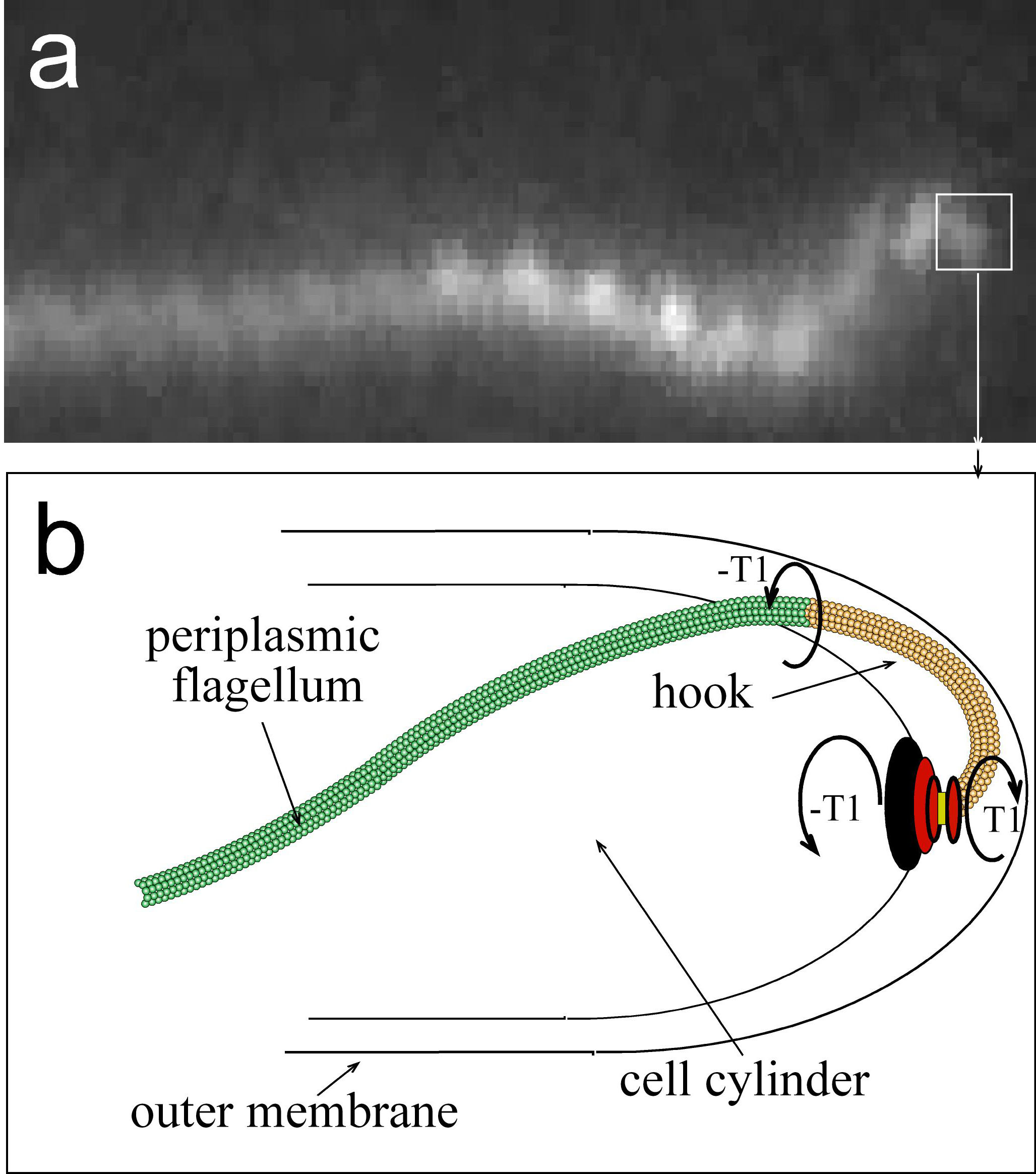B. burgdorferi’s
periplasmic flagella act as a motor.
 |
| Fig.14. Mechanism Behind B. burgdorferi's Motion |
With a “hook” that spins on its axis, the
bacterium’s flagella rotate, creating a backward, “corkscrew” motion.
This rotation of the flagella enables B. burgdorferi
to propel itself and swim in both low and highly viscous fluids and materials.
The flagella are located in the periplasmic
space: between the cytoplasmic membrane and the outer membrane.
These two
membranes allow the flagella to “drive the rest of the cell around the long
axis” and to create a motion capable of penetrating complex tissues within and between different hosts.
They
also offer the bacterium protection against its host’s immune system.
The flagella allow it to outrun the host’s immune cells.
Mortility of B. burgdorferi is a very significant part of its success in
invading other organisms.
 |
| Fig.15. B. burgdorferi in Motion |
From the dermis, B. burgdorferi disperses
throughout the tick’s body to its internal organs and tissues, including myocardium (muscular
tissues in the heart), Synovial fluid (found in humans’ joints), heart, and the neurological system.
No comments:
Post a Comment